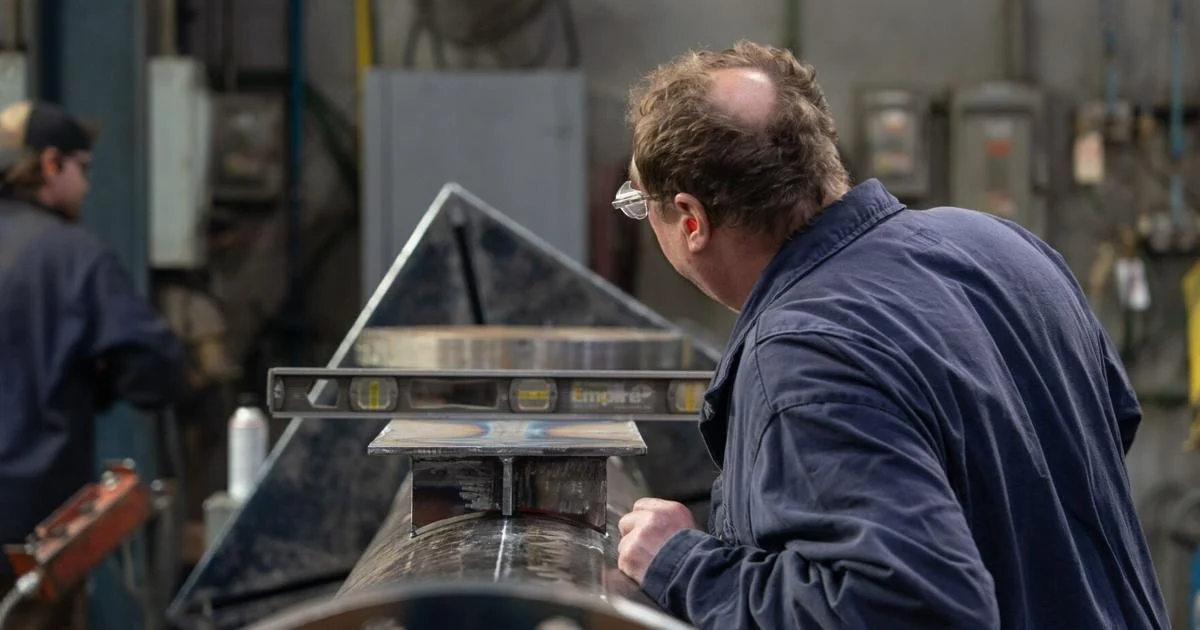
The Trump administration’s tariffs are starting to be felt across the Buffalo Niagara region, with some of the biggest local companies saying the levies will cost them millions of dollars, while others say the impact has been minimal so far.
At Graham Corp., a Batavia manufacturer, executives estimate that the tariffs will cost the company between $2 million and $5 million this fiscal year. Moog Inc., one of the region’s biggest employers, estimates that the tariffs will lead to a $15 million to $20 million hit on its operating profits during its current fiscal year. Astronics Corp., an East Aurora aircraft lighting and power supply maker, sees a similar-sized impact.
Yet other companies, like TransDigm, which recently purchased Elma motion control equipment maker Servotronics, and Hamburg building supply maker Gibraltar Industries, say the impact has been minimal.
The varying impacts show how the new tariffs are taking time to filter through the economy, with companies responding in different ways to the new costs. Some are passing them on to customers. Others are absorbing the tariff costs. Some are taking on some of the tariff costs and pushing the rest off on their customers and suppliers.
A survey of 77 members of the Buffalo Niagara Manufacturing Alliance in August found that 36% of them were passing along additional costs from the tariffs to customers, 9% were absorbing the additional costs, and 55% were doing a combination of those two things.
But now, with the tariffs squarely in place after months of uncertainty over how hefty they would be, companies are grappling with a more predictable cost structure that will force them to make more lasting decisions.
“I think businesses will start to make tough decisions regarding how they price their products,” said Julie Anna Golebiewski, a Canisius University economist.
For the businesses that were absorbing the tariff costs, that approach may not be sustainable in the long run, which could eventually act as a brake on the economy, pushing up consumer prices and curbing consumer spending and hiring.
“They were eating it in the short run, because they thought there was a possibility that the tariff rate would fall to zero,” Golebiewski said. “They didn’t want to raise prices and drive consumers away, because consumers are very attuned to what’s happening with prices, and they’re not very confident with where the economy has headed.”
“But I think now, businesses will be making some of those decisions with regard to prices and with regard to their workforce, and in many cases, I think, especially with small businesses, they will be laying off workers,” she said.
Ken Entenmann, chief economist with NBT Wealth Management, said he believes different participants along the supply chain of a product will absorb a piece of the cost increases generated by tariffs, rather than one business swallowing the entire amount. That incremental approach reduces the size of the price increase that consumers ultimately shoulder, he said.
Economists have been saying for months that the impact of the tariffs would be felt gradually and would take many months to filter down to companies and consumers.
In anticipation of the tariffs, some companies stocked up, building up their inventories before the tariffs kicked in, which allowed them to avoid the price pressure as those stockpiles were drawn down. But even those companies will feel the pressure from tariffs once they need to reorder.
Local companies continue to size up the economic impact of the tariffs and are doing what they can to limit the effects of the levies.
Graham Corp. said it has built a network of domestic suppliers and has established “favorable contract terms” to insulate itself from the tariffs’ effect.
Astronics Corp. estimated the impact of tariffs to its annual cost of materials – before mitigation – in the $15 million to $20 million range. Astronics said it believes taking steps like pass-through pricing, supply chain restructuring, and implementing free-trade zones “will significantly reduce the anticipated impacts of tariffs over time.”
Moog has also been trying to take steps to keep the tariffs’ impact to a minimum, by verifying which of its products are covered by the U.S.-Mexico-Canada Free Trade Agreement, and raising prices for customers in some of its markets.
Smaller employers are also coping with the impact of tariffs.
BNP Empowered Print is a Buffalo commercial printer with 83 employees. Its core business is producing retail and grocery fliers, including for Tops Markets. The company is facing higher costs for imported ink, because the pigments it needs are sourced from countries like China and India, which have been subjected to high tariffs. The company also is facing tariffs on aluminum used in its production process.
And for several months this year, Canada was imposing 25% retaliatory tariffs on products BNP Empowered Print made for Canadian customers and shipped there.
The retaliatory tariff was adding up to an additional $20,000 to $30,000 in costs a month, said Thomas Majerski, the company’s president. “It was just devastating, but we were absorbing those costs, because if we passed it along or attempted to pass it along to those customers, they would just move their business to a Canadian printer,” he said. “They were very clear that that was what they were going to do.”
The company recently learned Canada had lifted the retaliatory tariff as of Sept. 1, so BNP Empowered Print is working on trying to recoup those costs, Majerski said.
But the tariffs impacting its ink costs remain in effect. Majerski said the company explored sourcing those products from other countries, to reduce costs, but found the quality was inferior. The company has attempted to pass along some of the cost to customers not under contract.
“It’s a delicate balance of not wanting to harm our customers so we discourage them from printing, but at the same time, we can’t continue to absorb these expenses,” Majerski said.
The company is also trying to boost sales volume to help offset the tariffs’ effects, he said.
BNP Empowered Print estimated the annualized cost of all the tariffs impacting the company at $300,000.
Trump announced his plans for sweeping tariffs in April. Since then, the administration has implemented them in an on-again, off-again fashion. And the tariff rates imposed on different countries − and specific sectors − have fluctuated.
Carl Rosati III, BNP’s vice president of finance and administration, said the tariffs have made it difficult for the company to make projections, with uncertainty about what might come next.
Other companies say the tariffs’ effect on them is muted.
TransDigm, the owner of Servotronics, has had a “very small, insignificant really, impact from the tariffs today,” said Kevin Stein, the CEO, during an August conference call with analysts. “We’re not spending a lot of time wringing our hands over the impact on TransDigm.” Stein said the company is “largely a domestic manufacturer with limited exposure to low-cost country sources.”
Gibraltar Industries “has been able to minimize the impact of tariffs and we expect to manage accordingly throughout the remainder of the year,” said William Bosway, the chairman, president and CEO, in an August call with analysts.
The Buffalo Niagara Manufacturing Alliance survey asked members how tariffs had impacted orders from customers on a year-over-year basis. About 45% said their orders were down, while 43% reported no change, and 12% said their orders had increased.
Among the companies reporting a change in orders, the most frequently cited response – by 18% of the companies − was a decline of between 11% and 25%.
Peter Ahrens, the manufacturing alliance’s executive director, said it “might be too soon for all manufacturers to realize the repercussions of the tariffs.”
The tariffs have also had somewhat of an impact on hiring by alliance members. Sixty-three percent said they were not making changes to hiring in light of the tariffs, while 29% said they were decreasing their hiring. Eight percent reported they were increasing hiring in light of the tariffs.
The 29% of members reporting they were lowering their hiring targets “doesn’t bode well for the U.S. economy, and certainly the Buffalo Niagara region,” Ahrens said.
The fluctuation in the tariff rates has created uncertainty around investment plans, he said. “It’s just makes planning very difficult. Nobody wants to spend their cash reserves.”
The manufacturing alliance plans to conduct a follow-up survey in December, when the tariffs have been in effect longer. Ahrens said some of his group’s members currently absorbing the cost of the tariffs indicated they will revisit that approach come the start of the new year.
The business news you need
Get the latest local business news delivered FREE to your inbox weekly.
* I understand and agree that registration on or use of this site constitutes agreement to its user agreement and privacy policy.
Matt Glynn
Reporter
Get email notifications on {{subject}} daily!
Your notification has been saved.
There was a problem saving your notification.
{{description}}
Email notifications are only sent once a day, and only if there are new matching items.
Followed notifications
Please log in to use this feature
Log In
Don’t have an account? Sign Up Today



